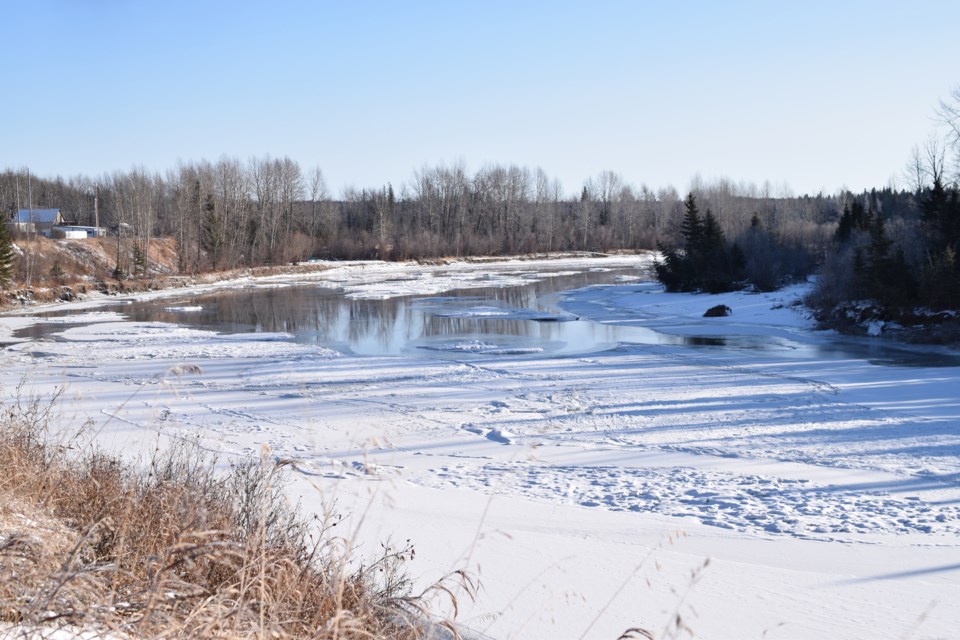ATHABASCA – As worries about water trickle down into municipalities in southern Alberta, experts on the Athabasca River Basin (ARB) region say drought conditions haven’t had a notable impact on the river.
Dr. Scott Ketcheson is an Athabasca University hydrologist and the National Sciences and Researching Council of Canada Research Chair in Hydrological Sustainability. He works and researches in the ARB, particularly in the wetlands south of Fort McMurray. With the help of a sensor system, Ketcheson and his team monitor streams and rivers as they flow through catchments in the area. While drought conditions are prevalent in the southern part of the province, Ketcheson said the ARB is in the wet portion of a 15-year climate cycle.
“From 2008 to 2018 it was fairly dry, and then from 2018 on it’s been relatively wet, and I think that’s helping to mitigate the drought conditions that are occurring elsewhere,” said Ketcheson during a Jan. 30 interview. “In the shallow (groundwater) systems I’m measuring, the levels aren’t reflecting any of the longer-term drying symptoms.”
No need for panic
As water commissions in the central part of the province enter water-sharing agreement for the first time since 2001, the Aspen Regional Water Services Commission said it’s been relatively unaffected by drought conditions since the spring of 2023.
“We haven’t had any (drought) implications at this time,” said Jamie Giberson, who manages the commission. Giberson said it was too early to tell what things would look like for the region come spring, due to the reactive nature of the river.
“What we know about the river is that there are no water control structures, so there are no dams or weirs unlike pretty much every other major water system in the province,” said Giberson. “The Athabasca River changes very quickly and significantly, mostly with rain events. We see direct changes from precipitation events upstream of Athabasca, that lead to direct and significant changes to the water level here.”
Giberson said the river’s water level in the spring and summer of 2023 illustrated his point. In the 15 years Giberson has been working at the commission, last year’s spring saw the lowest conditions he had seen, and by June those had increased to the highest levels he had seen, culminating in a ‘one-in-a-hundred’ year peak at the end of the month.
Financial assistance
Away from the banks of the Athabasca River, the dry conditions are having more of an impact on local farmers and ranchers. Kelly Olson, co-owner and operator of Ole Farms, said the drought has had an impact on their business, which includes a 1,200 head feedlot, and 1,500 breeding females.
“You don’t have as much feed available, and depending on when it rains you may have less pasture available as well,” said Olson. “For a city person, if it doesn’t rain you don’t have to cut your lawn very often. For us, if it doesn’t rain, the feed isn’t growing, and grass isn’t available for the animals.”
To help ranchers like the Olson’s, the Canada-Alberta Drought Livestock Assistance initiative has been expanded into more areas, including the counties of Athabasca, Barrhead, and Westlock. The application date was extended to Feb. 22, after initially closing Jan. 15.
“It’s going to help some people, it was pretty dry last spring and I’m thinking it’ll be a benefit to quite a few people,” said Olson, who had looked into the program as well.
Under the initiative, farmers could get up to $150 per head to help with the increased costs of feed. Cattle, bison, horses and water buffalo are eligible for more funding than other livestock, with sheep, goats and alpacas qualifying for the least amount of funding.
In a Jan. 25 provincial press release, RJ Sigurdson, Minister of Agriculture and Irrigation, said he was pleased the province had been able to collaborate with the federal government. To find out if you qualify for the program, check out the requirements here.



